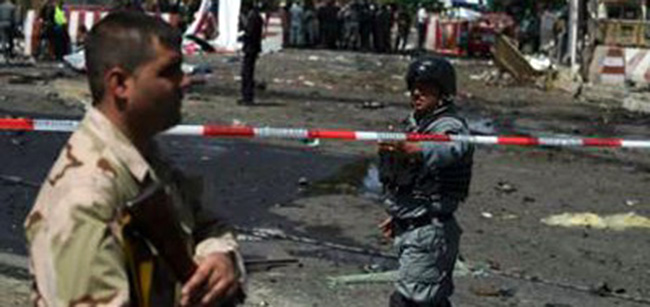Although terrorist groups maximize the level of threat against the entire region, Afghanistan bears the brunt of terrorism in the Asia. The escalation of militancy with the Taliban’s “Omari Operation” and emergence of the self-proclaimed Islamic State of Iraq and the Levant (ISIL) have left our nation at the mercy of violence and bloodshed more than ever before. The Taliban, who are emotionally hurt with the death of Omar’s successor Mullah Akhtar Mansour, will seek to take revenge.
Since the Taliban group in Afghanistan has recently issued a statement for the Central Asian countries amid concerns that the ongoing violence in Afghanistan could destabilize the Central Asian States, the overwhelming militancy will spill over into the region. Insisting on group’s policies to refrain from interfering in other countries’ internal affairs, the Taliban say that their policy towards other nations is based on ‘Do not harm nor accept harm’ which has been repeatedly announced in the statements by the Islamic Emirate as well as in the Eid messages of its leader.
The statement by the Taliban group comes as there are concerns certain militant groups are attempting to infiltrate into the Central Asian countries by expanding their terrorist activities in Afghanistan.
The leaders of the States are mainly concerned regarding the attempts made by the loyalists of the ISIL terrorist group to expand foothold and operations in Afghanistan and the region.
In the meantime, the Afghan officials are saying that foreign insurgents belonging to the regional countries, including Pakistan and Tajikistan, are fighting along with the other militant groups in Afghanistan. As a result, the Afghan Chief Executive Officer (CEO) Abdullah Abdullah talked about the terrorists’ sanctuaries in the neighborhood during his speech at the NATO Warsaw summit in Poland. Seemingly, he was pointing towards the safe havens used by the Taliban group and Haqqani terrorist network leadership councils in Pakistan. “Looking back at recent history, some of us failed to grasp, the strategy that enabled the reemergence of militant cells that enjoyed sanctuaries and staging grounds in our neighborhood,” he remarked. Thanking for NATO’s contribution, he said that Afghanistan was on the frontlines against various types of threats, including Taliban, ISIL and Al-Qaeda, and the mutual partnership mattered to Afghan people.
However, the US Department of State said Monday that the bordering regions between Afghanistan and Pakistan were still safe havens for many terrorist groups. Wherever the Taliban’s sanctuaries are, they have inflicted heavy casualties upon Afghan nation and threaten to continue so. The graph of combatants and non-combatants’ death toll have increased to a high level within the two past years despite the Afghans’ determined efforts to bring the Taliban elements to the negotiating table. The Taliban constantly fouled the game and never decreased their terrorist acts in the country – which reflects their mala fide intention.
The Taliban’s deadly attack on Afghan soldiers’ convoy on June 30, which left dozens of soldiers dead and wounded, demonstrates two facts: first, Haibatullah Akhundzada will follow his predecessor’s footsteps – as Mansour called peace talks as “enemy’s propaganda” and continued staging attacks against Afghan and US soldiers. Therefore, a one-sided search for talks will not bear the desired result. Secondly, he intends to have the upper hand over his predecessor and gain the charisma of the Taliban’s founder Mullah Omar. Therefore, he plans attacks behind the scene and never presents in the media either. He also seems relentless and stubborn, the same as Mullah Omar, in staging attacks against the US and Afghan soldiers. Although his photo leaked to media he intends to play the role of Omar and moves very cautiously not to fall the victim of the US drone. In a nutshell, Mansour’s sudden death has unnerved Akhundzada and he will not dare come out of smoke screen – his deputies are likely to give him the same advice repeatedly.
The question is that will Akhundzada gain the charisma of Mullah Omar? It is believed that since Sirajuddin Haqqani and Mullah Yaqoob, the son of the founding emir Mullah Omar, have been appointed as his deputies, he gains the upper hand over Mansour, whose appointment was very controversial and led to splinter group. His appointment, however, brought the Haqqani network and the Taliban elements closer. But on the other hand, the caliphate of Abu Bakr al-Baghdadi and the emergence of his people in Afghan-Pak border challenge his position – as the US officials referred to it as “ISIL-K” and believed that it “composed primarily of former members of Tehrik-e-Taliban Pakistan and the Afghan Taliban.”
It is believed that Haibatullah intends to play the role of Mullah Omar rather than Mansour. In other words, since he is a radical clergyman, he assumes the mantle of Mullah Omar and stage attacks from behind the veil against Afghan and US forces. So, he is a real obstacle before the peace talks and should be doomed to Mansour’s fate.
Home » Opinion » Masterminding Attacks behind the Scene
Masterminding Attacks behind the Scene
| Hujjatullah Zia

